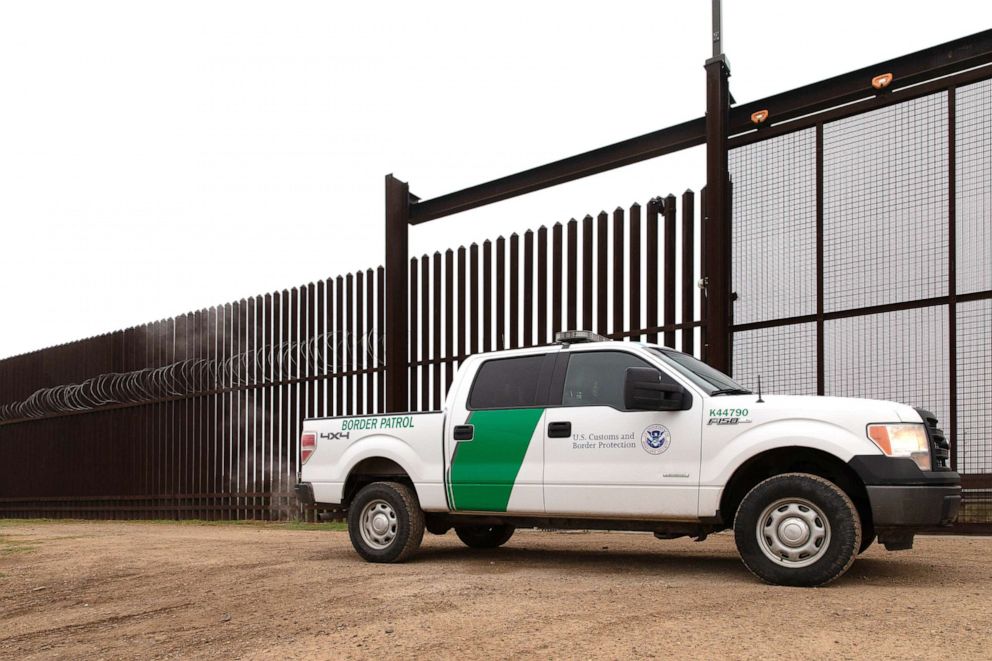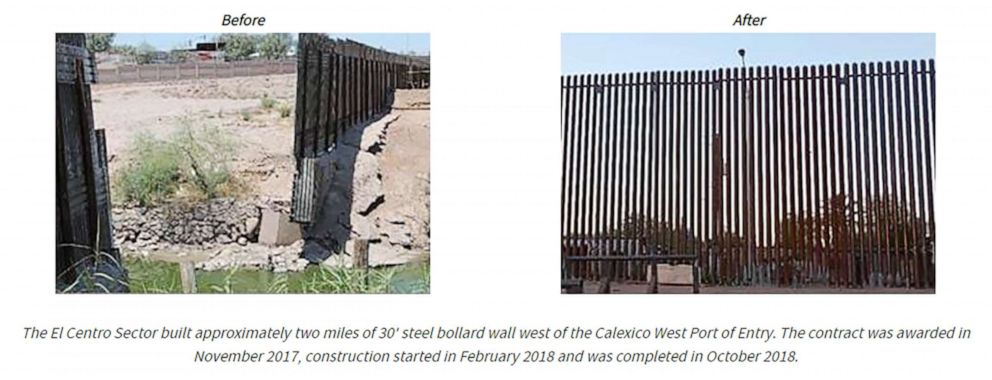Q&A: Here's a breakdown of where Trump's border wall stands
A look back at Trump's campaign promise for a "beautiful" wall.
House Democrats this week said they would appeal a judge’s ruling denying their request to block President Donald Trump from using a "national emergency" declaration to bypass Congress in order to fund his proposed southern border wall.
With that being just one of several legal challenges raising questions about the status of the president's project, here’s a breakdown of where the border wall stands today.
How much “wall” existed when Trump took office?
Prior to President Trump taking office, there were 654 miles of barriers along the southern border region, which included 354 miles of pedestrian fencing and 300 miles of barriers designed to stop vehicles. Some of these miles are double layers of fencing along the border line and barrier sections further from the line.
In places where no barrier existed before, how much new wall has Trump completed since taking office?
None. The administration has started, but not finished, building border barriers where none existed before. This process requires securing land and voiding environmental laws like the Clean Water Act, the National Fish and Wildlife Act, and the Endangered Species Act in certain areas. The 2019 government funding deal -- that ended the longest federal government shutdown in history -- specifically exempted certain parks and wildlife preserves from border wall development in the Rio Grande Valley. Multiple projects have been funded, but finishing construction depends on the “availability of real estate,” according to U.S. Customs and Border Protection.

How much wall has Trump built that was an upgrade to existing barriers?
So far, the Trump administration has replaced about 45.2 miles of what Homeland Security called “outdated and operationally ineffective barrier.” Most of that amount -- 40 miles -- was upgraded using $292 million that Congress approved for the 2017 budget year. The other five miles was paid for using some of the $1.375 billion Congress approved for upgrades in 2018.
The administration has made significant upgrades to certain stretches of existing border fences. Some of the older barriers were made from re-purposed military materials from the Vietnam era, which the administration says are easily breached by smugglers.
One improvement project in California that was completed last year has been hailed by Trump as a significant improvement. Trump visited this project in El Centro, California, earlier this year.
What other border wall projects are in the works?
While 45.2 miles of upgrades have been built, Congress has agreed to pay for additional border barriers. Since January 2017, the Trump administration has secured enough money for a total of 205 miles of border barriers, according to the latest update from U.S. Customs and Border Protection.
In February, Trump declared a “national emergency” at the border in order to tap $2.5 billion from the Defense Department to pay for as many as 129 additional miles of new and replacement wall. But that decision has ran afoul of the courts amid various legal challenges, including an injunction order by a California judge. The judge blocked about $1 billion in defense spending from being used on the wall pending a legal challenge. The administration is appealing that decision.
But even if the judge lifts the injunction, it’s hard to see how Trump could achieve the “almost 500 miles” of wall he promised supporters at a May 20 rally in Pennsylvania.

What did Trump promise during his campaign?
Trump made distinct claims about the border wall during his run for the presidency. He assured the wall would be built “inexpensively,” paid for by Mexico, and stretch the entire length of the southern border. None of those promises seems feasible today.
Funding from the Mexican government has not been a realistic option. Both former President Enrique Pena Nieto and current President Andres Manuel Lopez Obrador have explicitly avoided making any such commitment. The issue caused a diplomatic dust-up between Trump and Pena Nieto last year.
The U.S.-Mexico dividing line runs through the center of the Rio Grande river for 1,255 miles of the 1,954 mile-long border, according to a government estimate. That means much of the border line does not have a barrier and could not unless it’s built in the center of the flowing river.

Not long after Trump took office, his own Homeland Security Secretary expressed doubt that a contiguous wall could ever be built. A the time, then-Secretary John Kelly said it was “unlikely” that the administration would built a wall “from sea to shining sea.”
In Trump's first year, authorities along the U.S.-Mexico border saw an unusually low number of people attempting to cross. But since that first year, record numbers - mostly children and families -- have made unauthorized crossings and thousands more have tried to cross through ports of entry. Officials expect the total number of people stopped at the border to exceed 1 million by the end of the 2019 budget year.
But the administration might get a reprieve as historic data appears to show lower migration rates in late summer months, possibly as a result of hot desert temperatures in the southwest.
ABC's Lauren Pearle contributed to this report.




